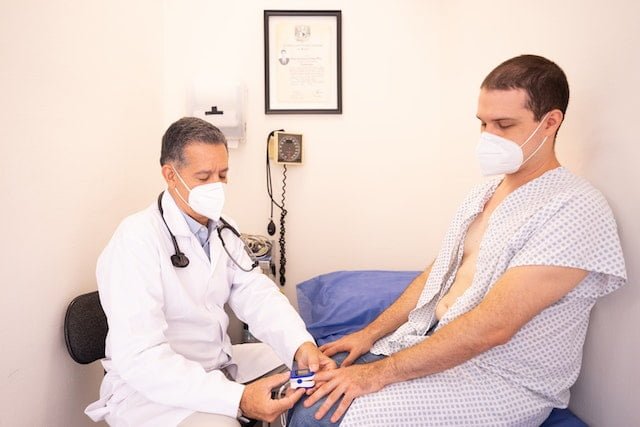Physical Address
304 North Cardinal St.
Dorchester Center, MA 02124
Physical Address
304 North Cardinal St.
Dorchester Center, MA 02124

Is there a difference between signs and symptoms (sign vs symptom)? This is one of the common questions asked in medical science studies.
Signs and symptoms are words that are often used interchangeably by individuals who are not familiar with medical sciences. These two words are important terms used in medical science to describe the physical manifestation of a medical condition or a disease.
In medical science, signs and symptoms help health professionals to understand a disease. Signs are the findings that can be observed by a health professional, but if it’s observed by a patient, it’s a symptom.
More differences regarding medical signs and symptoms have been discussed in this article.

The term “sign” has various meanings if you search the English dictionary. We have had to specify with “sign in medicine”, so that the definition is clearer.
A sign is a property of the body that indicates a disease. It’s an objective observable indication of a medical condition, disease, or injury.
A medical sign can be detected during a physical examination- and the signs of a disease or medical condition may be visible as a rash or bruise.
Medically, signs can also be detectable by using medical devices such as a stethoscope, and X-ray. An individual can observe signs by performing self-examination.
A few examples of medical signs include an abnormal gait, nail clubbing of the fingernails or toenails, enlarged lymph nodes, rash or skin lesions, and a Limbal ring- a darkened ring around the iris.
Also Read: Family Medicine vs Internal Medicine: Difference and Comparison
A symptom is a perceived change that is felt or experienced by a person that indicates a disease or disorder, such as rash, pain, fever, headache, or dizziness.
Symptoms occur as a personal experience that a patient deals with. Only a patient understands and can clearly describe their symptoms to a health professional.
The doctor will be able to diagnose the patient after performing a medical examination.
While signs are objectives, symptoms are subjective because only the patient can experience the symptoms of a worrying disease or medical condition. Only patients can clearly state the symptoms they experience to the doctor.
Whether the symptoms indicating a disease or disorder are headache, fever, nausea, body ache, dizziness, pain, or muscle fatigue, it’s best explained by the patient.
It’s important for one not to ignore any symptom they suspect to be unusual. It’s important to seek medical attention once you notice any kind of symptom. Failure to see a doctor will likely result in a more complicated health condition.
Signs and symptoms are words that are often used interchangeably by individuals who are not in the medical field. These two words are important terms used in medical science to describe the physical manifestation of a medical condition or a disease.
A sign is a property of the body that indicates a disease. It’s an objective observable indication of a medical condition, disease or injury.
A symptom is a perceived change that is felt or experienced by a person that indicates a disease or disorder, such as rash, pain, fever, headache, or dizziness.
Medically, signs and symptoms can be categorized into several types based on their nature and origin. The following are some of the common types of signs and symptoms;
Also Read: Cavity vs Tooth Decay: Difference and Comparison
These are types of signs or symptoms that occur suddenly. Acute signs and symptoms are usually severe.
Chronic signs or symptoms are the type that persist for a longer period. They usually last for more than three months- but a patient should consult a doctor earlier, before the three-month period.
This is a type of sign or symptom that is directly related to the medical condition or disease.
These are signs or symptoms that occur because of the disease or medical condition but they are not directly related to it.
These are signs or symptoms that usually affect a specific part of the human body.
| Basis of Comparison | Signs | Symptoms |
| Definition | A sign is a property of the body that indicates a disease. It’s an objective observable indication of a medical condition, disease or injury. | A symptom is a perceived change that is felt or experienced by a person that indicates a disease or disorder, such as rash, pain, fever, headache, or dizziness. |
| Nature | Objective | Subjective |
| How to check | Medically, signs can also be detectable by using instruments such as a stethoscope, X-ray, ophthalmoscopes, thermometers, and sphygmomanometer. . | In contrast, symptoms cannot be measured as it’s only experienced by the patient. |
| Observation method | Sign are usually visible and can be observed by a healthcare professional | Symptoms occur as a personal experience that a patient deals with |
| Examples | Medically, signs can also be detectable by using instruments such as a stethoscope, X-ray or taking the blood pressure. | Body pain, fever, nausea, headache, itching, dizziness, muscle fatigue, etc. |
| Types | Anamnestic signs, Prognostic signs, and Diagnostic signs | Chronic symptoms, Relapsing symptoms, and Remitting symptoms. |
| Visibility | Visible | Vague |
Also Read: Cavity vs Root Canal: Difference and Comparison
The following are a few examples of signs and symptoms
Also Read: Filling vs Crown: Difference and Comparison
Here are a few facts on signs and symptoms.
In medical science, signs and symptoms help health professionals to understand a disease. Signs are the findings that can be observed by a health professional, but if it’s observed by a patient, it’s a symptom.
While signs are objectives, symptoms are subjective because only the patient can experience the symptoms of a worrying disease or medical condition. Only patients can clearly state the symptoms they experience to the doctor.